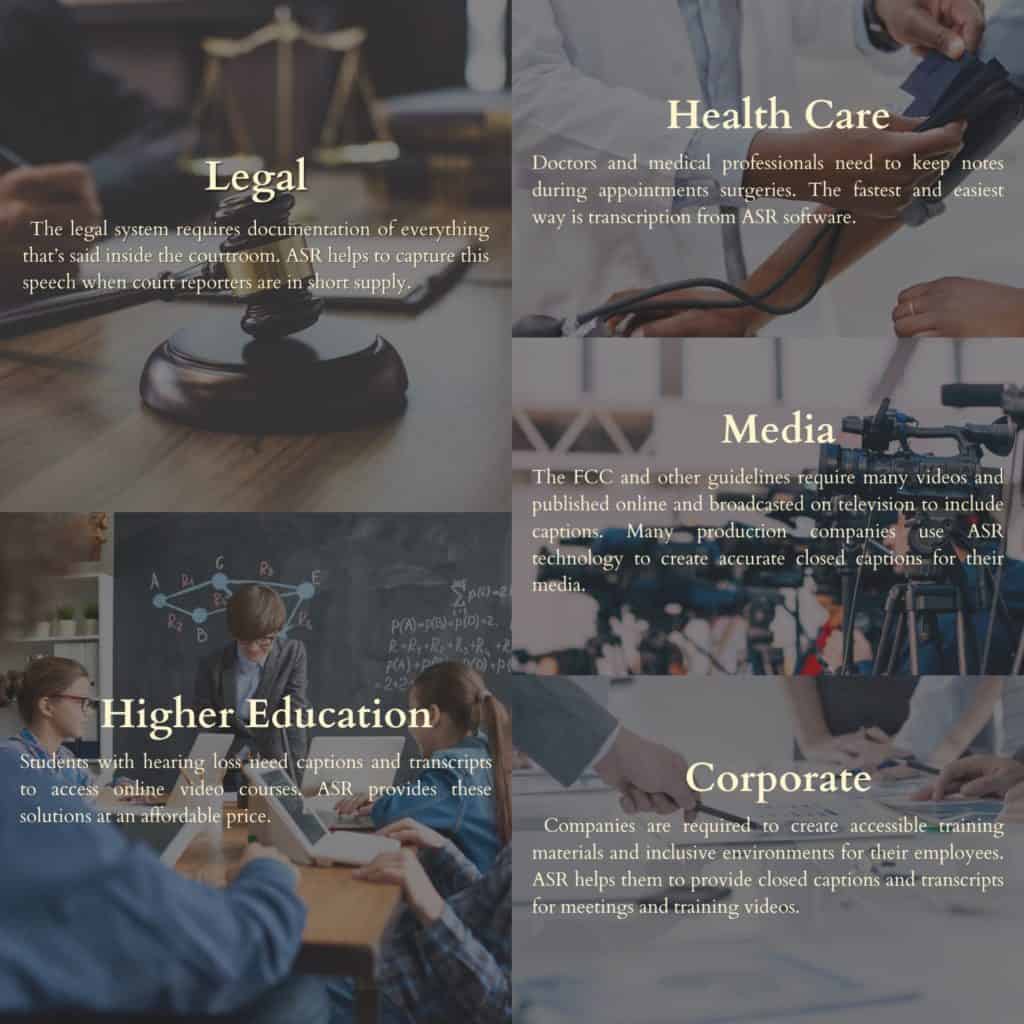Many people think of AI technology as something of the future, but it’s here and working now. AI technology is transforming the way people work across many different industries. Instead of replacing the human worker, AI technology often helps them to work more efficiently, taking away the redundancy of many tasks.
In the world of captioning, advancements in AI technology, specifically ASR, are helping to improve the efficiency of the human captioner. It’s transforming the industry and improving the accessibility of videos and movies.
What is ASR?

Automatic Speech Recognition or ASR, as it’s known in short, is the technology that transforms human speech to text. ASR technology recognizes, understands, and translates spoken words to text with high levels of accuracy and often distinction between speakers.
How does ASR work?
ASR technology may be advanced, but the process of converting speech to text is quite simple.
First, the ASR software picks up the audio from a pre-recorded file or from live speech. This audio is then converted into a wave file which is edited to delete background noise and adjust the volume. To properly analyze the speech, the ASR technology breaks down the audio into sequences and then analyzes them to determine whole words and complete sentences.
Once the speech has been analyzed and properly detected, it is converted into a text document. This text document can be formatted for closed captions in file types such as SRT, or as a transcript text document.
What is ASR used for?
ASR is being used in a variety of industries, such as higher education, legal, finance, government, healthcare and media where conversations are continuous and often need to be tracked or recorded word for word.
Some examples:

How ASR technology has grown over the past 10 years:
ASR technology extends back to 1952, when a digit recognizer called “Audry” was created by Bell Labs to transcribe spoken numbers. Over the years, technology has advanced to improve the complexity and accuracy of ASR technology, as well as its implications in modern technology.
With the rise of social media over the last 10 years, ASR has been a prevalent factor in improving these applications. Apps such as TikTok and Instagram use ASR technology to help users add captions to videos. Spotify and other similar applications use ASR technology to provide users with transcripts of podcasts. Online meeting platforms, such as Zoom, use ASR technology to provide live captions and meeting transcripts.
With every new application that’s developed, it seems like ASR always has a part to play. As ASR continues to improve in accuracy levels, we expect to see an even greater explosion in how ASR helps make audio and video files more accessible.
ASR Technology in 2023
ASR can be used for an infinite number of applications in the modern world of technology. It’s an easily configurable technology that can be integrated into different systems to provide end users with great benefits.
Here are just a few ways that ASR technology is being used in 2023:
- Closed captions for broadcasted television
- Closed captions for live Houses of Worship meetings
- Automatic transcriptions for online meetings
- Hands-free voice dictation on smart phones
- Clinical note taking
- Virtual support agents
- Automatic translations
SubCaptioner & ASR Technology
SubCaptioner creates closed captions and transcriptions using the most innovative ASR technology to produce high levels of accuracy. We are dedicated to continuously improving our services as ASR technology continues to improve and provide users with even greater levels of accuracy and more complex languages and dialects.
We’re proud to be at the forefront of ASR innovation and provide customers with fast, easy, and affordable captioning services using the best in ASR technology.



